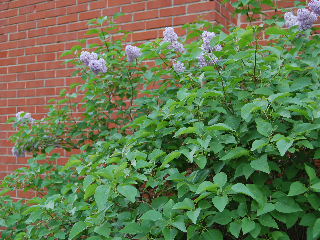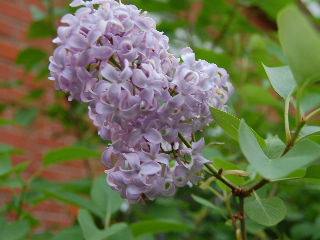
Lilac is a great, old-time, extremely easy to cultivate, deciduous shrub, found growing on many rural homesteads, particularly in the cooler regions of the eastern United States.
Lilac (Syringa vulgaris) produces very fragrant clusters of flowers that appear in the spring and usually last for several weeks.
The blooms may be white, pink, magenta, or the classic lavender that seems to define the word “lilac”, that is used as a color description for paints, wallpapers, crayons, and fashions. The lilac fragrance is very popular in perfumes, shampoos, and other cosmetics.
The plant can grow from about 6 feet to sometimes upward of 10 feet in height; over a period of years, the lilac will extent itself outward into a much larger and bushier plant by producing suckers or offsets that root on their own.
Once the suckers have taken root, they can be dug from the ground and transplanted to get a new start of the plant.

Left on its own with no control or pruning for a long time, the lilac will become overgrown and much less apt to continue producing a profusion of fragrant blossoms each spring.
A little bit of work can be done to rejuvenate the plant and give it a more desirable appearance and a new burst of healthy growth.
In the winter, after the leaves have dropped, identify the oldest and most overgrown branches in the lilac cluster.
Remove about half the total number of these branches by using a pruning saw and cutting off the branches very close to the ground.
During the next winter, remove the remaining overgrown branches from the cluster. This allows you to lower the overall height of the lilac, and it also allows the lilac to rejuvenate itself from within by allowing more light to come into the interior part of the plant, thus allowing new and vigorous shoots to develop and grow from the root system of the old plants that have been removed.
Once the plant has been rejuvenated, a little bit of maintenance on an annual basis will allow the lilac to flourish and continue producing fragrant blossoms. Remove just a few shoots every year to keep the plant in balance and to prevent it from becoming overgrown again.
Just remember that you don’t want to take away too many newer shoots in any given year as this will cause a shortage of blossoms the following year for this springtime bloomer.
 Lilac is a great, old-time, extremely easy to cultivate, deciduous shrub, found growing on many rural homesteads, particularly in the cooler regions of the eastern United States.
Lilac is a great, old-time, extremely easy to cultivate, deciduous shrub, found growing on many rural homesteads, particularly in the cooler regions of the eastern United States.
 Left on its own with no control or pruning for a long time, the lilac will become overgrown and much less apt to continue producing a profusion of fragrant blossoms each spring.
Left on its own with no control or pruning for a long time, the lilac will become overgrown and much less apt to continue producing a profusion of fragrant blossoms each spring.